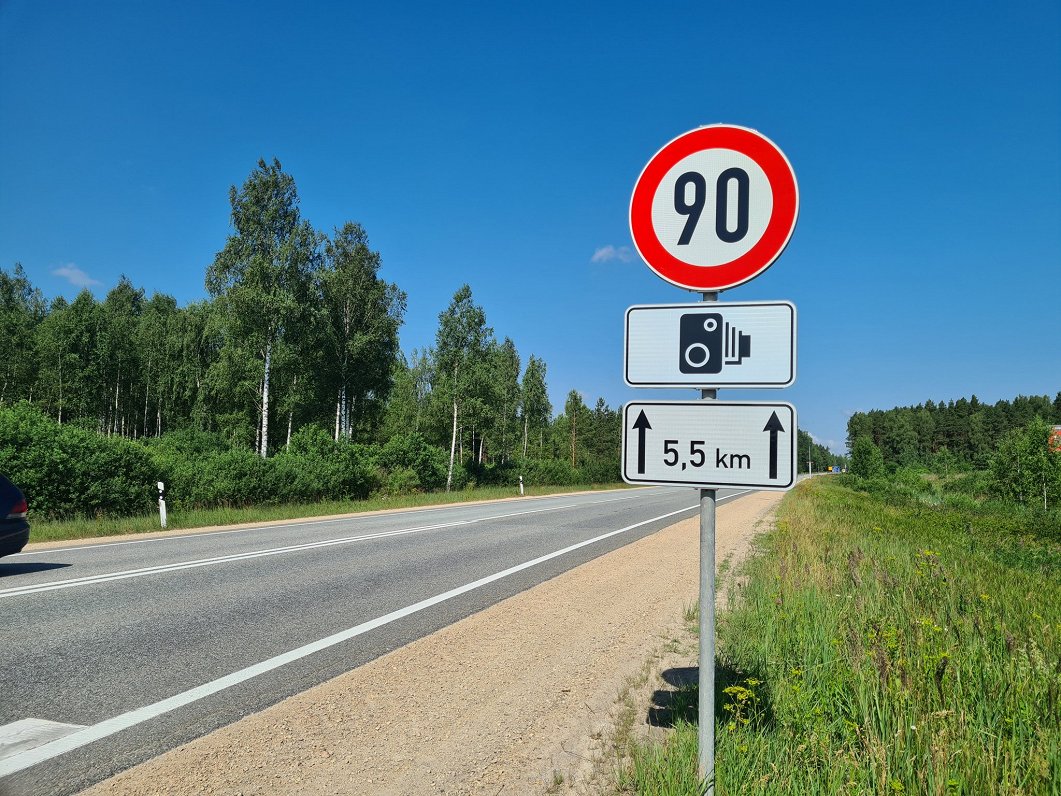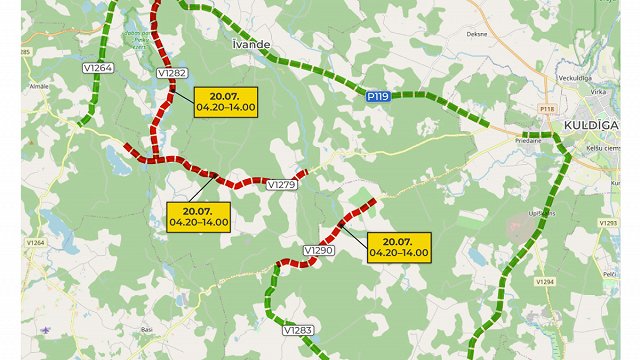All 16 sections of national highways where the average speed control system is expected to be implemented this year have had cameras and equipment installed, but the system that links them is not yet operational. The supplier of the average speed control system, "Fima Group", is still working on the necessary IT system, after which the equipment and system will have to be verified. A contractual penalty will be applied to the supplier for failing to meet its deadline, LVC said.
The average speed control system is planned to be introduced this year in 16 stretches of the national road network:
- Tallinn highway (A1 km 14.1-20.1 km);
- Vidzeme highway (A2 km 54.5–62.3);
- Valmiera highway (A3 km 36.3–38.7);
- Riga bypass (A5) from Stūnīši to Jaunmārupi (km 23.1–28.6);
- Daugavpils highway (A6 km 102.4-116.0; km 133.5-139.2; km 150.2-159.7);
- Bauska highway (A7 km 25.3-40.1);
- Jelgava highway (A8 km 50.0-69.2);
- Liepāja highway (A9 26.1–38.0 km; km 157.3–169.7);
- Ventspils highway (A10 km 24.1-30.8 km; km 44.9–52.4; km 135.0-140.8 km);
- The main state highway Russian border–Rēzekne–Daugavpils–Lithuanian border (A13 km 81.8–88.5);
- Regional highway Cēsis–Vecpiebalga–Madona (P30 km 22.1–29.0 km).
Unlike an ordinary speed camera, average speed cameras work by recording when a vehicle passes two fixed points and issues a penalty if, given the applicable speed limit or limits between those points, the vehicle has moved from one point to the other in less than the legal minimum time.
The cameras will also have the ability to read license plates to check if vehicles have the necessary technical certificate, or if they are linked to any outstanding fines.
Verification could itself be a complex procedure as the length of each section will need to be accurately measured using the distance measuring devices at the disposal of the Latvian National Metrology Center, and indicated in the verification certificate, so that the average driving speed is calculated correctly and without errors.
LVC admitted that the implementation of the project is experiencing significant delays. The average speed control section on the Riga Ring Road (A5) in the section from Stūnīši to Jaunmārupa (km 23.039-28.52) was verified at the end of June, but gaps were discovered in the IT system, which the supplier is currently fixing. Once the IT system is fully operational, re-verification will be required at this stage. All other 15 stages will be verified separately.
It is expected that the verification and necessary approvals will take from two to four weeks, thus the first stage of average speed control on the Riga Ring Road (A5) could start operating at the end of August. Currently, the system is not working and therefore the relevant road signs which have been installed remain covered up.
According to the procurement results, the average driving speed control system is being installed by "PS Fima Group" for the contract price of 1,261,155 euros (without VAT). Of this, 900,000 euros (without VAT) are intended for the installation of the average speed control system in 16 stages, and 360,000 euros (without VAT) for the maintenance of the system over the three-year period 2023-2025.






























